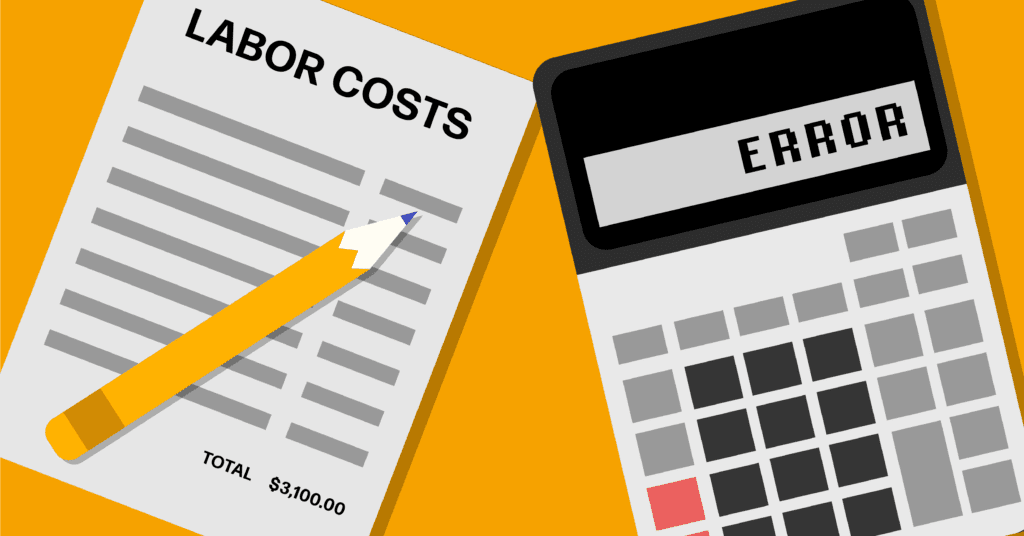Have you ever wondered whether you were paying construction workers too much or too little? How do you attract and retain quality talent while maintaining the proper profit margins?
Accounting for labor is integral to determining project costs, but it’s a mighty task to undertake, complicated even further when working with large or multiple crews, or when unexpected costs pop up mid-project. Add the cost of materials and equipment to your calculations, and you’ve got a lot to work through.
So how do you accurately calculate construction labor costs? What ratio should you expect to pay?
Here, we go over the usefulness of determining labor costs, finding the total amount you’re paying, and how the SmartBarrel device can help you organize your company’s accounting and finances.
Why calculate construction labor costs?
Having an accurate picture of what is and isn’t financially viable lets you deliver estimates quicker and more efficiently.
Think about it: the simple mistake of presenting a client with an incorrect project quote is not only embarrassing but can end up costing the client money, making correctly calculating costs all the more important.
Once you have realistic estimates, you’ll also be much more prepared should unexpected costs ever arise, and you will be able to meet financial goals while avoiding overspending.
How to calculate construction labor costs
You can use several formulas for accurate projections when estimating construction labor costs. But first, you should be aware of two major factors at play:
- Direct costs – This cost includes the yearly wages paid to your employees. For example, $40,000/year.
- Indirect costs – This cost includes extra things paid for by the company, such as employee benefits, recruiting and training, payroll taxes, vacation, worker’s compensation, uniforms, supplies, and equipment (i.e., company phones and vehicles). These costs can quickly add up and should always be included when determining how much an employee costs the company to keep.
Calculating total indirect costs
Simply add up all the costs not included in an employee’s yearly wage.
For example:
Payroll taxes: $3,000
+ Insurance: $1,500
+ Benefits: $2,500
+ Other expenses: $5,000
= $12,000 indirect costs
Calculating the total cost of each employee to the company
To determine the total yearly amount that your company will need to cover for each employee, use this formula:
Direct costs + Indirect costs = Total cost to the company
For example:
$40,000 (direct costs) + $12,000 (indirect costs) = $52,000/year cost to the company
Calculate base rate
Base rate is how much labor costs you hourly and is known as the “unit price” for labor. It helps you develop accurate quotes, stabilize profit margins, and ensure you’re charging enough to make up for costs. It doesn’t factor in the cost of supplies and depends on your crew’s size.
To find the base rate, add up the wages paid to each crew member.
For example:
Foreman lead: $35/hr
+ Skilled worker: $25/hr
+ Apprentice: $15/hr
= $75/hr base rate
Calculate the cost of a project
To determine how much a given project will cost in total in terms of labor, use this formula:
Crew’s base rate x The number of workers on a project x The number of weeks the project will take x The number of hours worked in a week = The total labor cost of the project
For example:
75 (base rate) x 3 (workers) x 8 (weeks to complete) x 40 (hours per week) = $72,000 total labor cost of the project
*This number is a standard base and doesn’t factor in other costs such as materials.
Calculate labor burden rate
The labor burden rate is the rate of indirect costs your company has to pay. It not only helps you understand how much an employee costs to keep, but helps you decide whether you can afford to give workers employee benefits.
To find labor burden rate, use this formula:
Indirect costs / Direct costs = Labor burden rate
For example:
$12,000 (indirect costs) / $40,000 (direct costs) = $0.30 labor burden rate
This means you’re paying $0.30 in indirect costs for every dollar of gross wages you’re paying the employee.
Ideally, you’d figure out how much extra money you need to make to cover the labor burden. By doing so, you’ll be able to keep wages competitive to attract the best talent without sacrificing profit margins.
How much should labor cost in construction?
Construction labor rates can vary depending on the scope of your project. Although the actual number will likely change from project to project (due to different manpower requirements and material costs), the percentage you’re spending on labor should stay consistent and within a certain range.
Construction labor costs should range from 20 to 40% of your project’s total costs. When accounting only for direct costs, it should be on the lower side (20 to 30%).
The drawback of calculating construction labor costs manually
Manually calculating labor rates for construction for every new and existing employee (and then factoring in promotions when they come about) can be a laborious task. It’s also less than ideal due to the possibility of human error.
The solution
Construction accounting and timekeeping software automates this process, so you no longer have to spend hours calculating the cost of every employee on a project. The SmartBarrel device perfectly syncs with existing accounting solutions to make your job easier.
With the SmartBarrel device, you’ll receive valuable financial insights, along with other features that help streamline accounting processes:
- Approved time cards – Spend less time cleaning up time cards and more time running other aspects of your construction business.
- Track labor costs – Know how much labor is costing you according to estimates for better team and project management.
- Onboarding – Speed up onboarding by easily adding worker profiles.
- Automated data – Automatically generated data can be exported directly to payroll.
The SmartBarrel device is an intelligent solution that’s intuitive, easy to set up, and easy to use. Simplify calculating construction labor costs and request a demo with SmartBarrel today!




